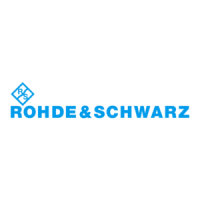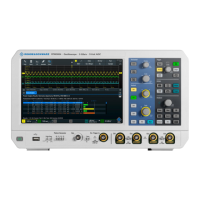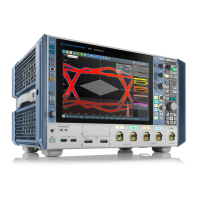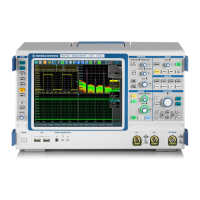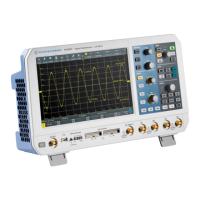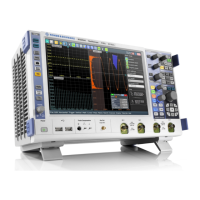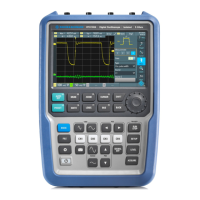Acquisition and Waveform Setup
R&S
®
RTM20xx
19User Manual 1317.4726.02 ─ 01
length on both paths. It is also immune to interference and noise and occupies only one
input channel.
A differential probe has three sockets: the positive signal socket (+), the negative signal
socket (-), and the ground socket.
Differential probes provide multiple input voltages:
●
Differential mode input voltage (V
in
)
Voltage between the positive and negative signal sockets
●
Positive single-ended input voltage (V
p
)
Voltage between the positive signal socket and the ground socket
●
Negative single-ended input voltage (V
n
)
Voltage between the negative signal socket and the ground socket
●
Common mode input voltage (V
cm
)
Mean voltage of positive and negative signal sockets referred to the ground socket,
respectively
Two of these voltages are independent values, the other two can be calculated:
R&S RT-ZD probes detect only differential input voltages and provide it to the oscillo-
scope. Common mode signals are suppressed by the probe. This characteristic is descri-
bed by the Common Mode Rejection Ratio (CMRR):
GainCommonMode
alGainDifferenti
CMRR
In addition, the R&S ProbeMeter of R&S RT-ZD differential probes can measure differ-
ential and common mode DC voltages. The measurement result is displayed on the
oscilloscope's screen. The common mode mesurement of the R&S ProbeMeter allows
to check the input voltage relative to ground and is a convenient way to detect breaches
of the operating voltage window, and the reason of unwanted clippings.
Basics
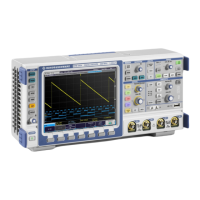
